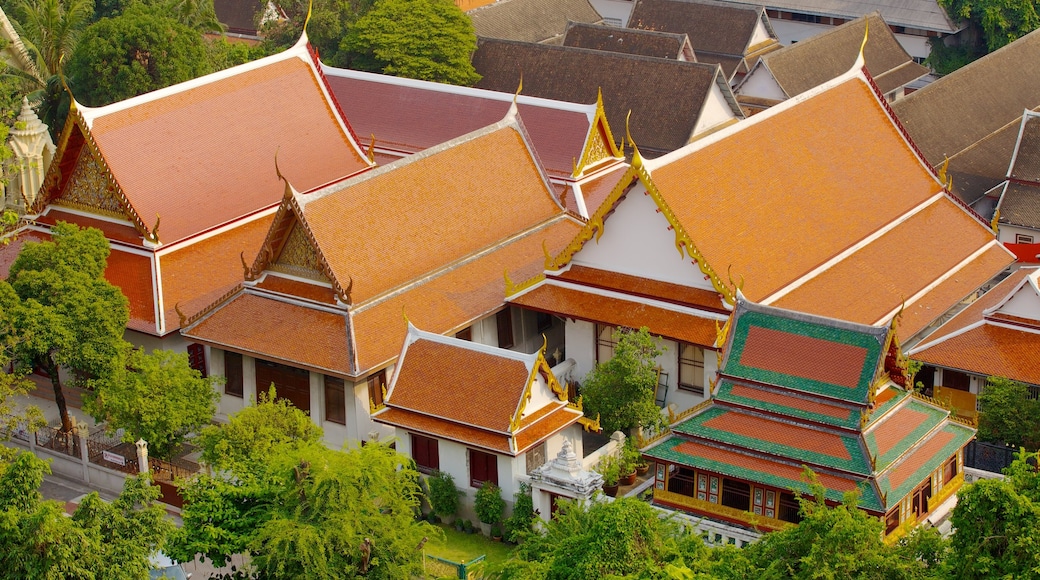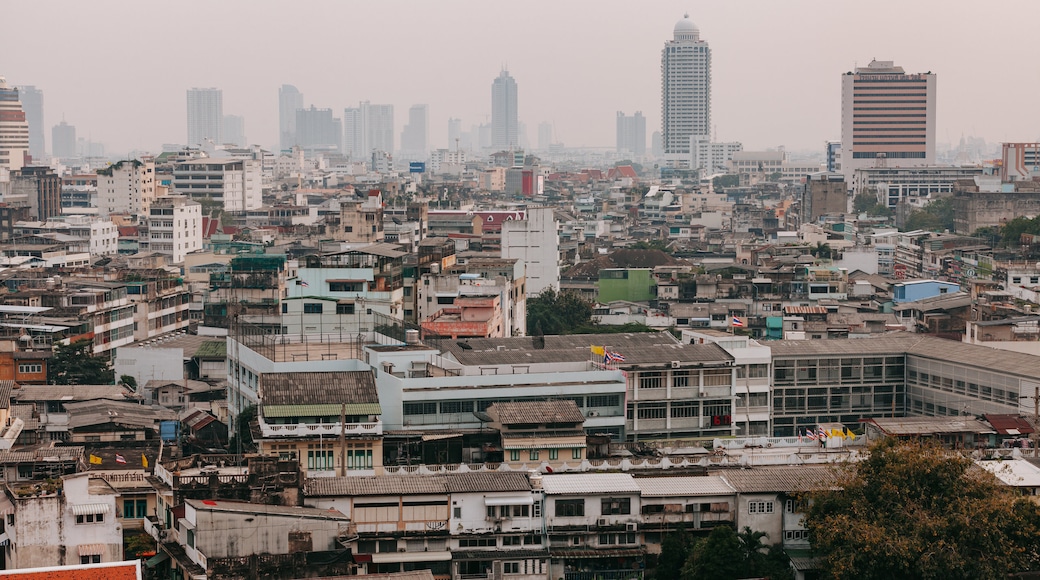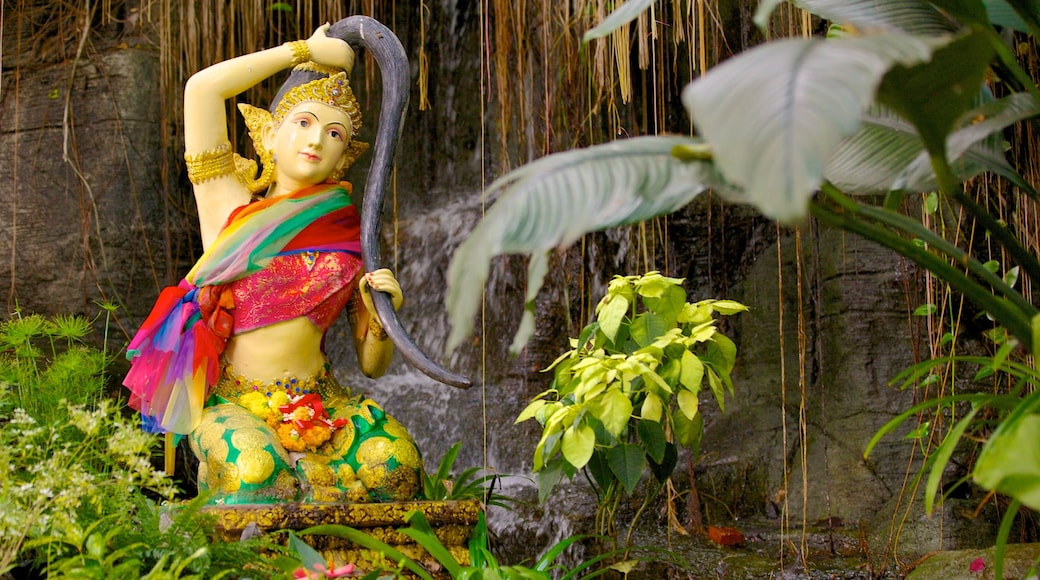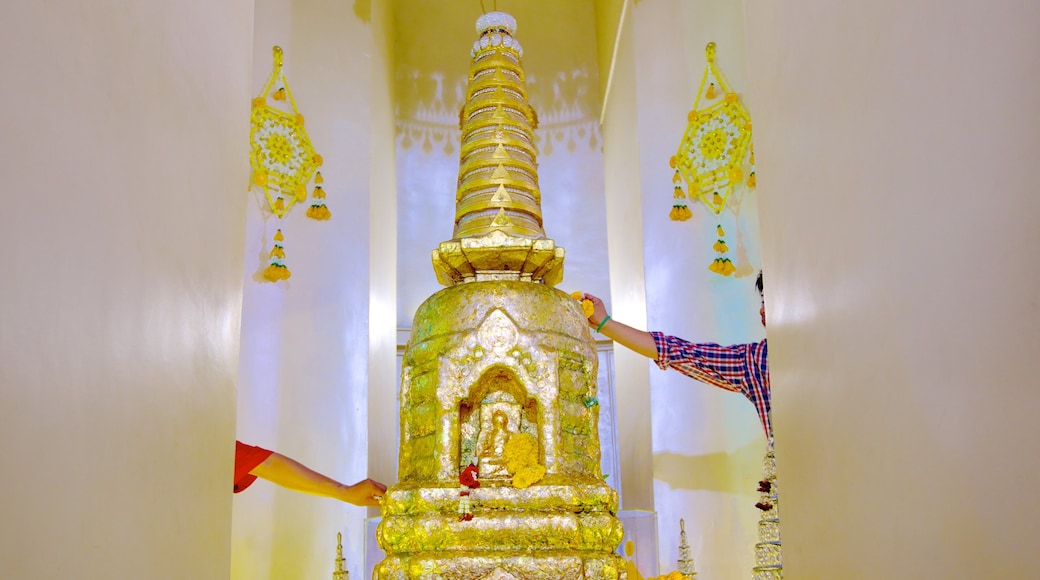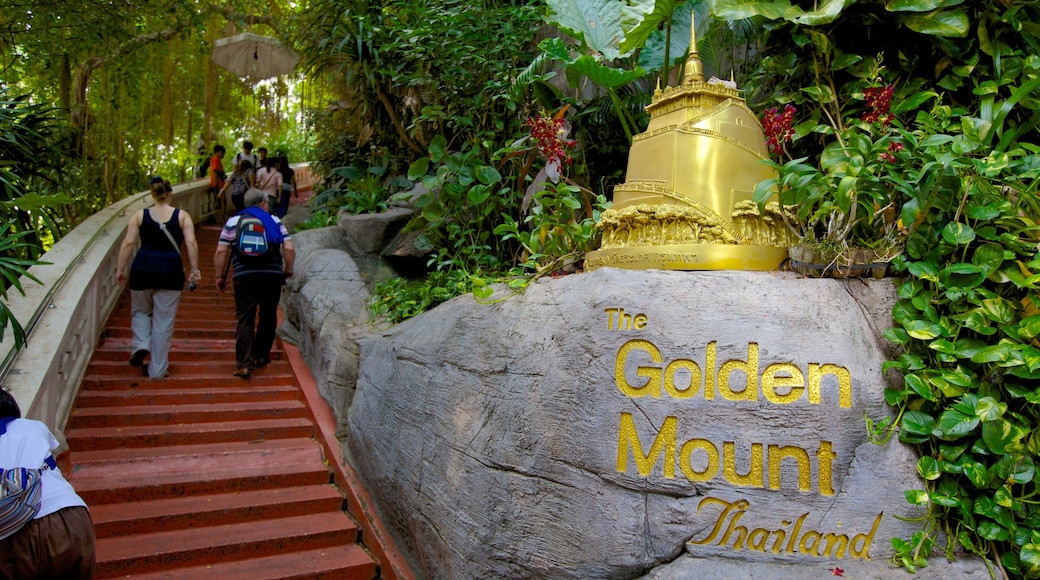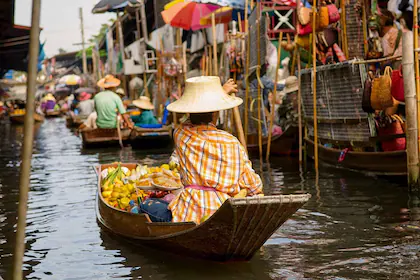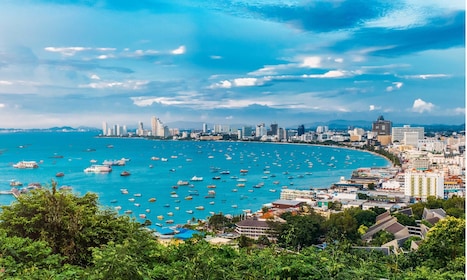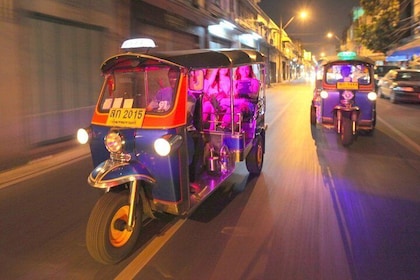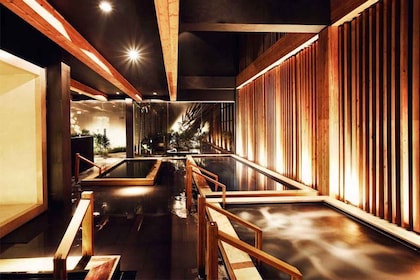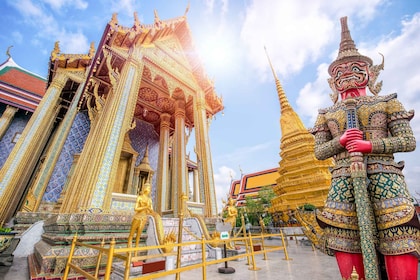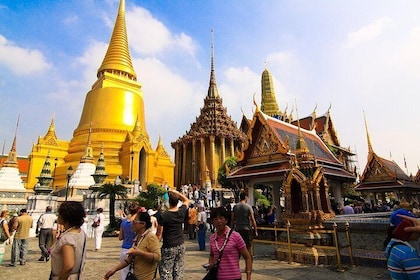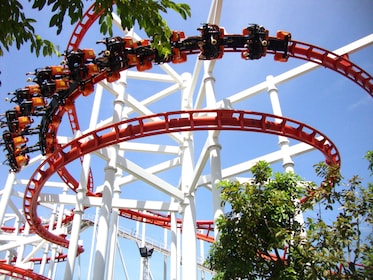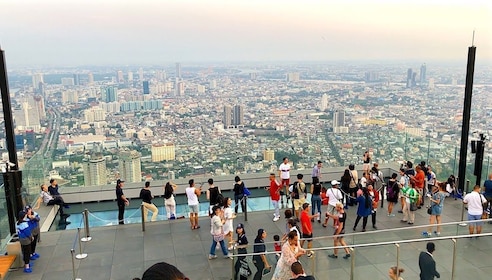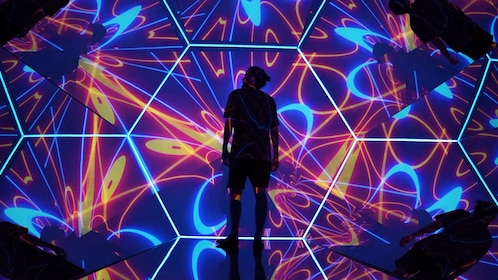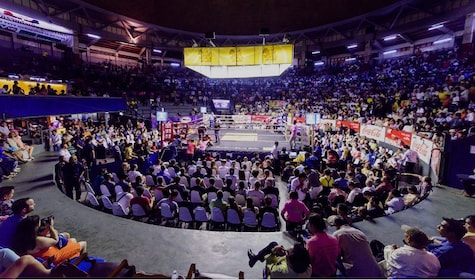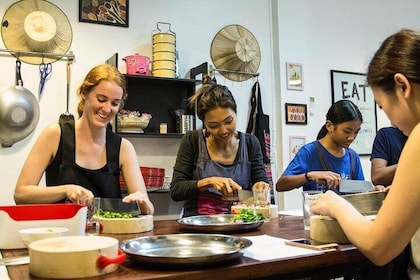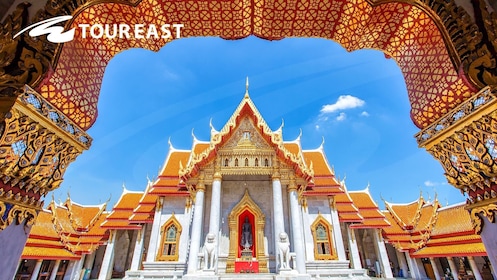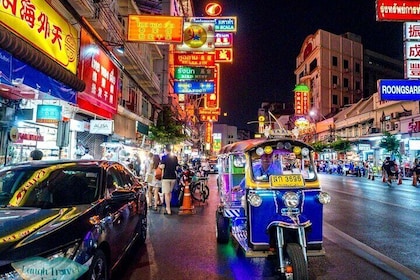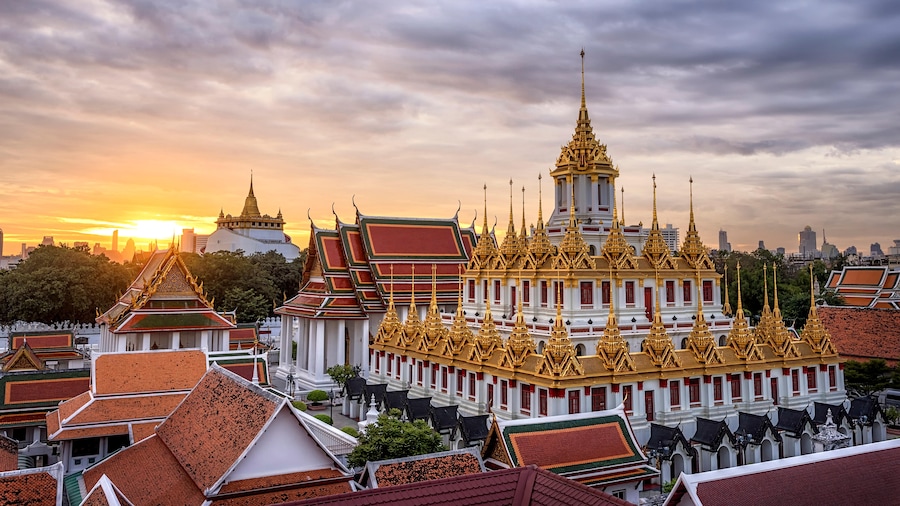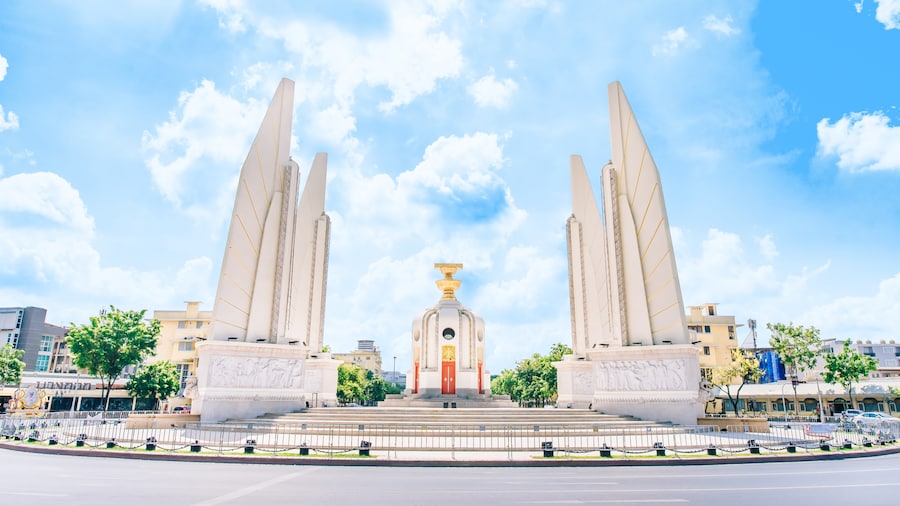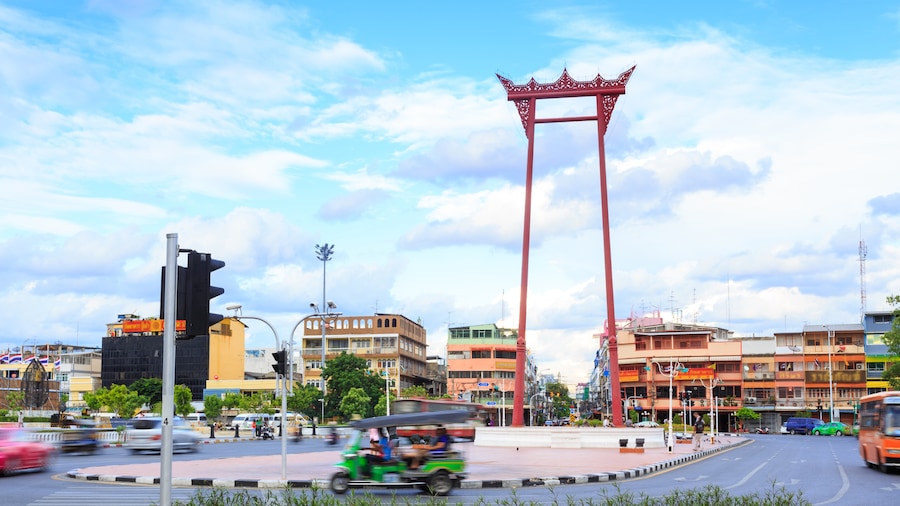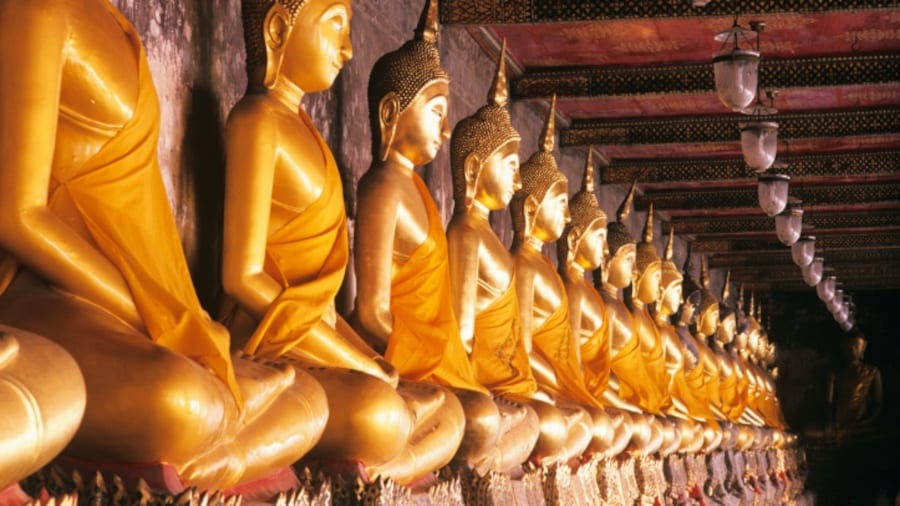Head to this ancient temple and you’ll also find the Golden Mount, a structure that offers panoramic views as a reward for climbing the 318 steps to the top.
Long before you reach the Wat Saket building, you’ll see another structure towering over it. This is the chedi, or burial site, called Golden Mount. At 190-feet (58-meters) high, it was once the tallest structure in Bangkok. It still provides excellent views of the city, once you have climbed the 318 steps to the top. The temple of Wat Saket sits at its base and houses a giant standing Buddha.
The spiraling stairway to the Golden Mount is also a journey into the ancient history of the complex. The lower temple was called Wat Sakae during the Ayutthaya dynasty. King Rama I restored it and named it Wat Saket Ratcha Wora Maha Wihan. Under King Rama II, the plague hit Bangkok and the grounds served as a mass grave. The partially overgrown cemetery makes for an eerie start to the climb.
Soon you will reach Phu Khao Thong, or the Golden Mount, with its wall of bells. King Rama III first attempted to construct the chedi but it collapsed. Rama IV reinforced the hill with logs and King Rama V, in the late 19th century, finally completed the gilded conical tower. Once you reach the top, admire the view of Bangkok, with the Chao Phraya River snaking past the old Grand Palace, continuing north under the modern Rama IV Bridge.
If you are in Bangkok at the time of the nine-day Loy Krathong temple fair, get here on opening day before sunset to see a real spectacle. In a candlelit procession, pilgrims make their way up the hill to the chedi, which is draped in a red cloth.
The complex is open daily. A visit is free, but you pay a small fee to enter the chedi. The climb is gradual and you can pause halfway to catch your breath under a wooden gazebo on a hot day.
It is more difficult to get to Wat Saket from central Bangkok than it looks on the map, so avoid walking and take a taxi. You can also take a long tail boat from Klong Saen Saep jetty, near Petchaburi MRT.
